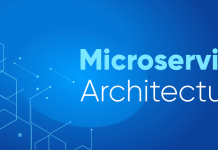In the world of software architecture, the choice of a web framework is not simply about syntax or ecosystem — it’s about understanding the performance dynamics, scalability limits, and architectural paradigms each framework embodies. ASP.NET Core 8, Node.js, and Go represent distinct schools of thought in web development. While each has its merits, this article explores their capabilities in-depth through the lens of a software architect.
This analysis will focus on three key performance metrics: Throughput, Latency, and Resource Utilization, and will include real-world architectural insights with practical considerations.
The Players: A Brief Overview
1. ASP.NET Core 8
ASP.NET Core 8 has emerged as a powerhouse in web frameworks, pushing the boundaries of performance with significant enhancements. Built on the .NET platform, it boasts:
- Native AOT (Ahead-of-Time) Compilation: Reduces runtime overhead and startup times.
- High Throughput: Optimized Kestrel web server delivering exceptional request processing speeds.
- Integrated Ecosystem: Seamless compatibility with Azure and enterprise tooling, making it ideal for scalable, cloud-native solutions.
2. Node.js
Node.js has long been the de facto choice for event-driven, non-blocking I/O applications. Its key strengths include:
- JavaScript Everywhere: A unified language across frontend and backend development.
- Non-Blocking Architecture: The event loop handles multiple connections efficiently.
- Massive Ecosystem: npm provides access to thousands of libraries, speeding up development.
3. Go (Golang)
Go, designed by Google, excels in simplicity and concurrency. Its architecture emphasizes:
- Goroutines: Lightweight threads enabling efficient parallelism.
- Static Typing with Compilation: Ensures predictable performance and low runtime overhead.
- Minimalistic Design: Clean APIs and tooling for high-efficiency microservices.
Architectural Comparison
To better understand these frameworks, let’s visualize their core architectural components through diagrams.
ASP.NET Core 8: Middleware-Centric Architecture


Explanation: The modular middleware pipeline ensures flexibility and extensibility. Developers can add, remove, or rearrange middleware components to handle tasks like authentication, logging, and error handling.
Node.js: Event-Driven Architecture


Explanation: Node.js relies on a single-threaded event loop, with tasks delegated to worker threads for computationally heavy operations. This model is highly efficient for I/O-bound workloads but can bottleneck under CPU-intensive tasks.
Go: Lightweight Goroutines


Explanation: Go’s goroutines allow for efficient, parallel request handling. Its simplicity and minimal overhead make it an excellent choice for microservices and APIs.
Performance Metrics: Analyzing the Numbers
1. Throughput
Throughput measures how many requests a framework can handle per second. Here’s the comparison:

- ASP.NET Core 8 achieves unmatched throughput due to its optimized threading model, high-performance Kestrel server, and task-based asynchronous handling.
- Node.js, while excellent in real-time applications, struggles with CPU-bound tasks.
- Go, though efficient, falls short in comparison to the optimized pipeline of ASP.NET Core 8.
2. Latency
Latency is the average time taken to process a single request.

- ASP.NET Core 8 benefits from Native AOT, reducing cold start latency and runtime processing time.
- Node.js’s latency increases with CPU-bound workloads due to its single-threaded nature.
- Go’s compiled nature ensures low latency but is slightly higher than ASP.NET Core 8 in high-load scenarios.
3. Resource Utilization
Resource efficiency is critical for cloud-native applications.

- ASP.NET Core 8 has improved garbage collection and memory pooling, ensuring better resource efficiency.
- Node.js, while lightweight, incurs higher memory usage in complex applications.
- Go’s minimal runtime and goroutine model excel in low resource consumption.
Architectural Insights
Each framework shines in different scenarios:
- ASP.NET Core 8 is ideal for enterprise-grade, cloud-native solutions where scalability, performance, and tight integration with Microsoft’s ecosystem are key.
- Node.js thrives in real-time applications, such as chat apps or collaborative tools, due to its event-driven, non-blocking I/O.
- Go is perfect for microservices architectures, especially in resource-constrained environments, due to its efficiency and simplicity.
Conclusion
ASP.NET Core 8 redefines performance benchmarks with its enterprise-ready optimizations, leaving Node.js and Go behind in raw numbers. However, software architecture is about context — choose the framework that aligns with your workload, team expertise, and long-term goals. As always, the right tool for the right job.



















